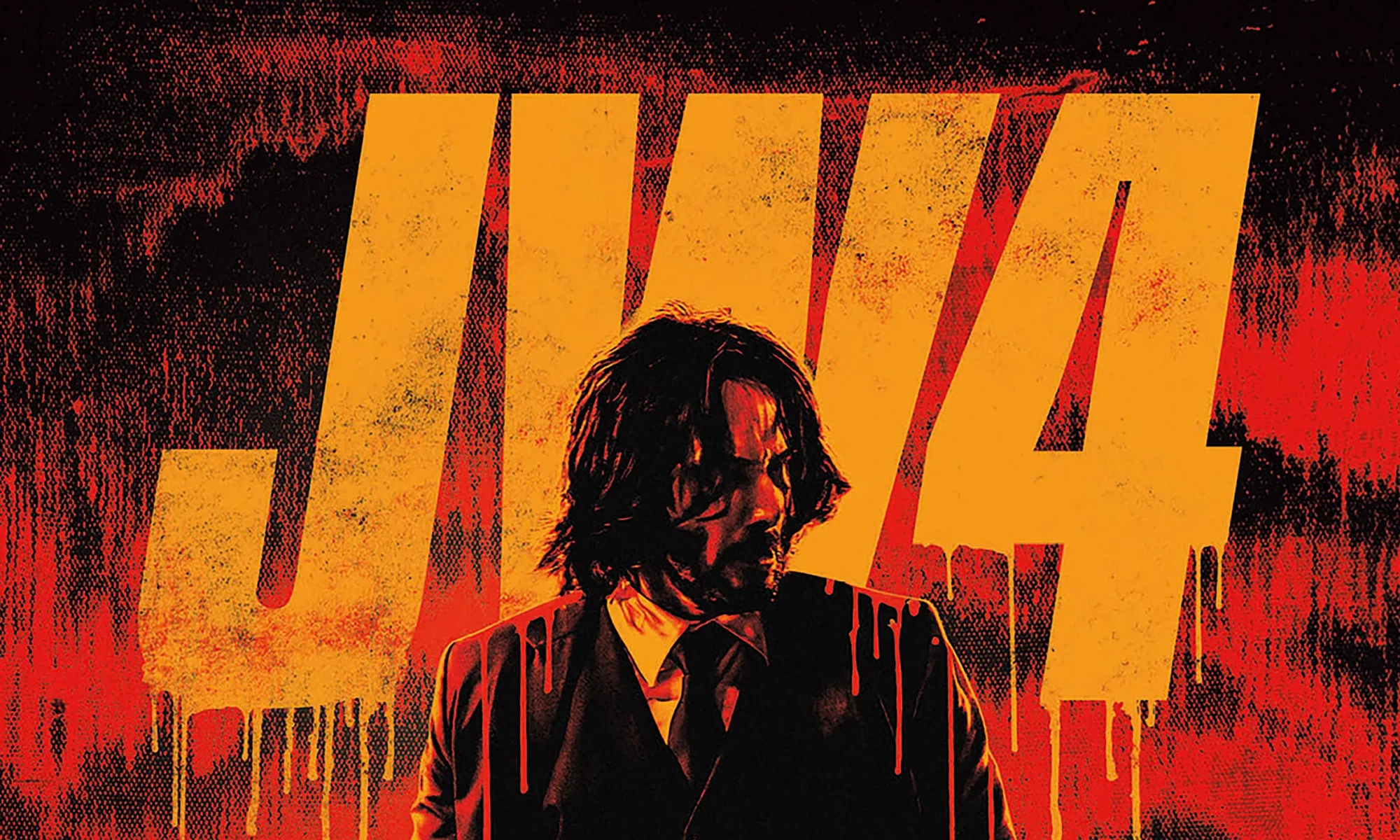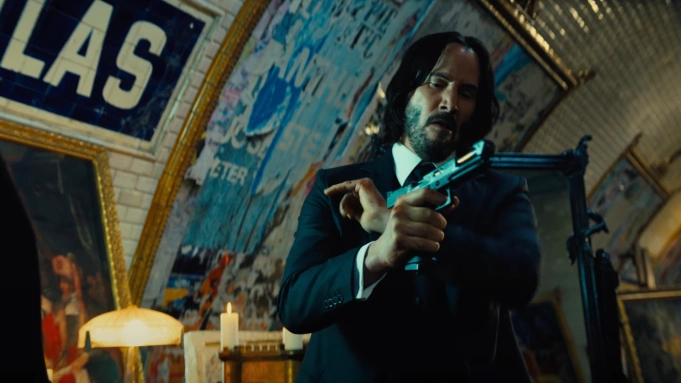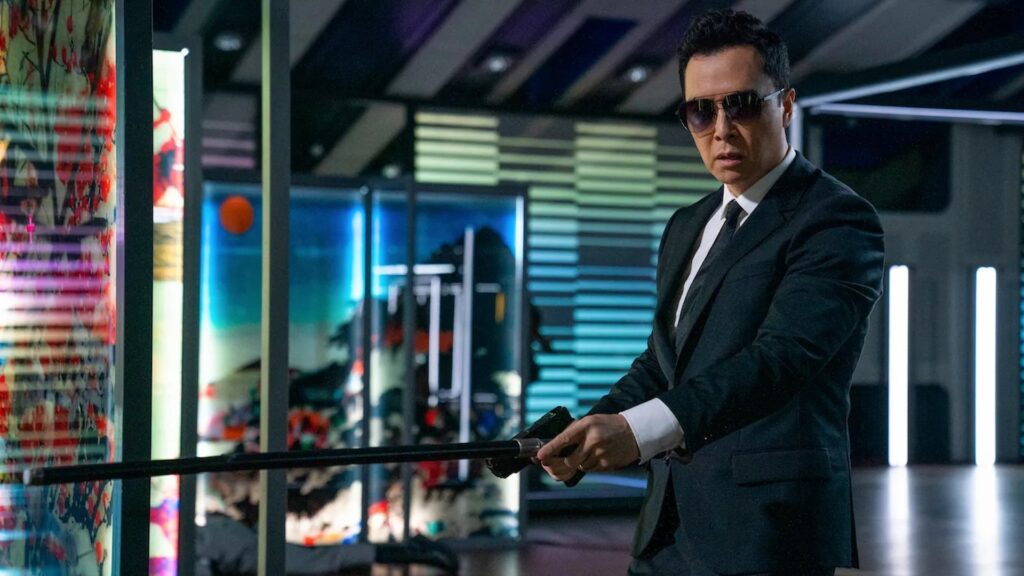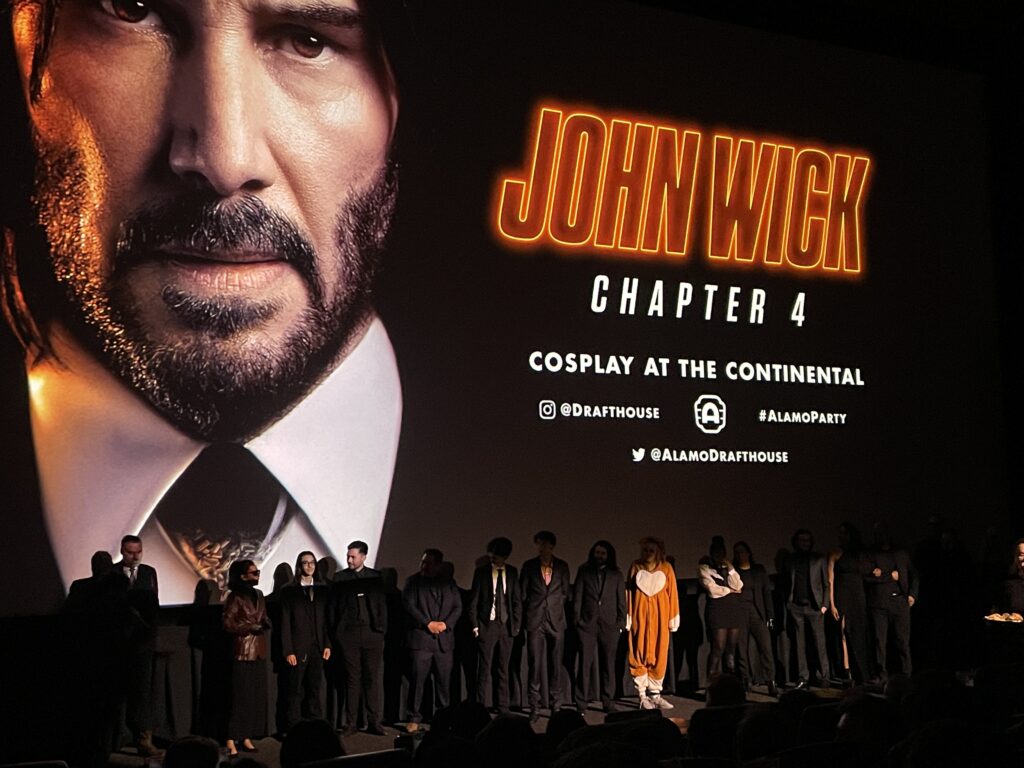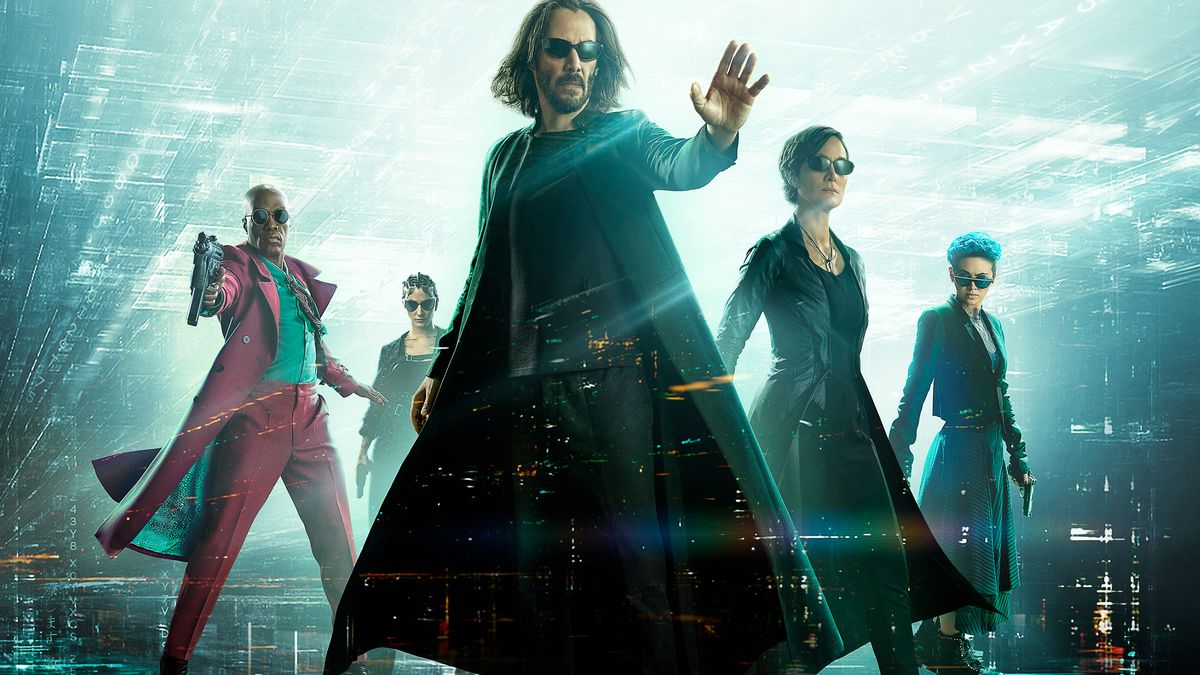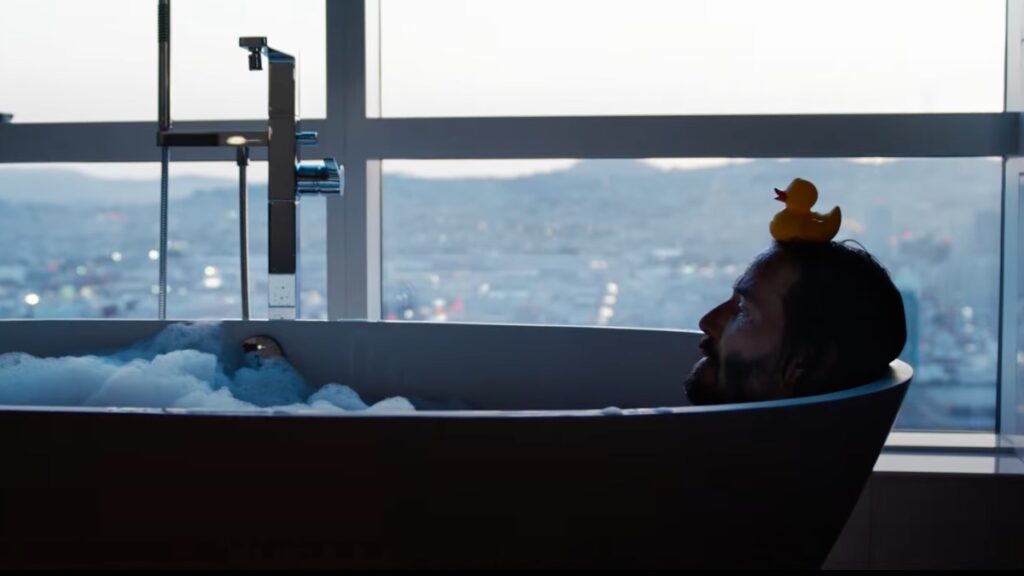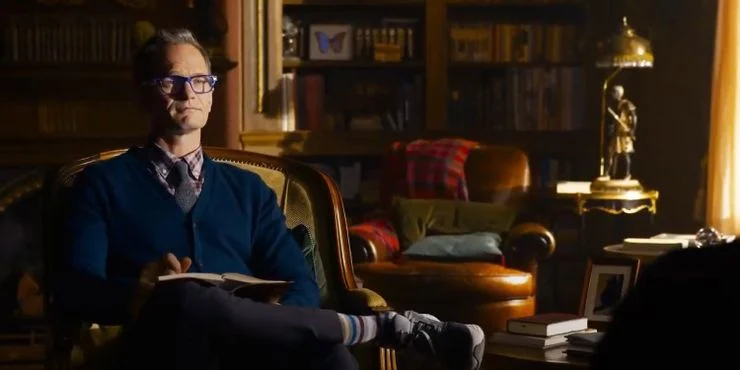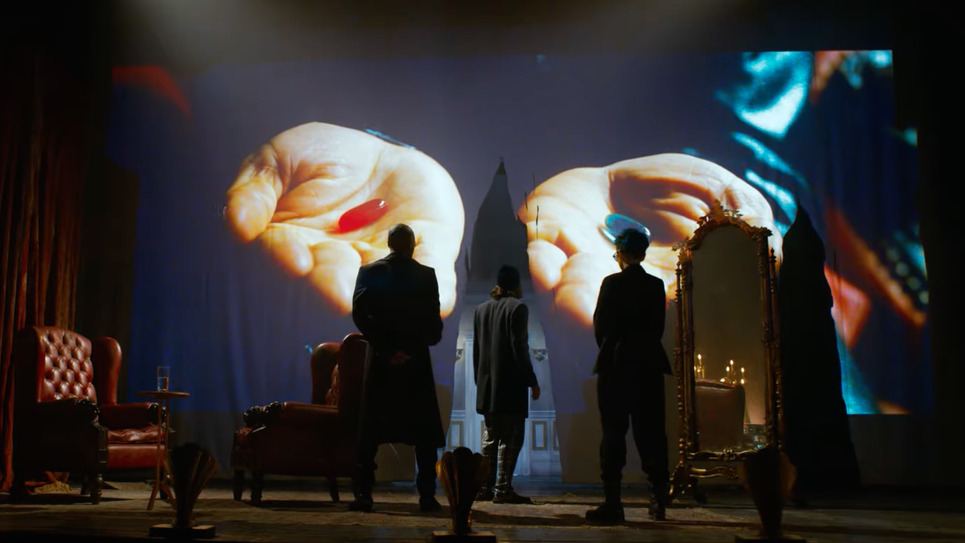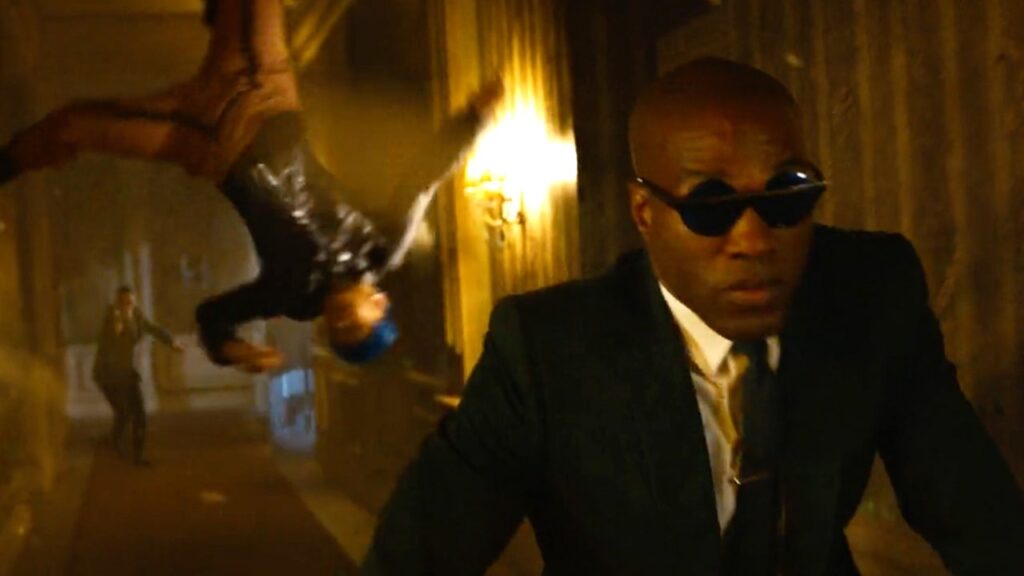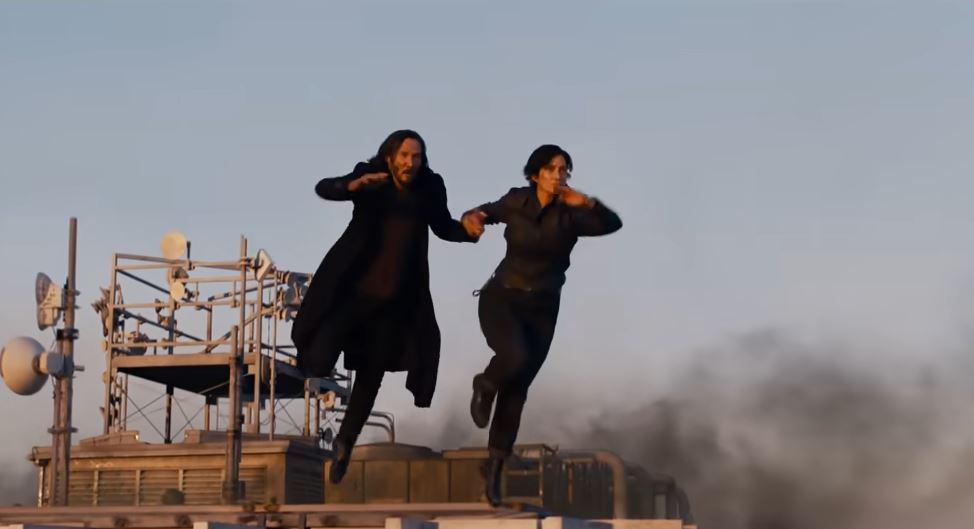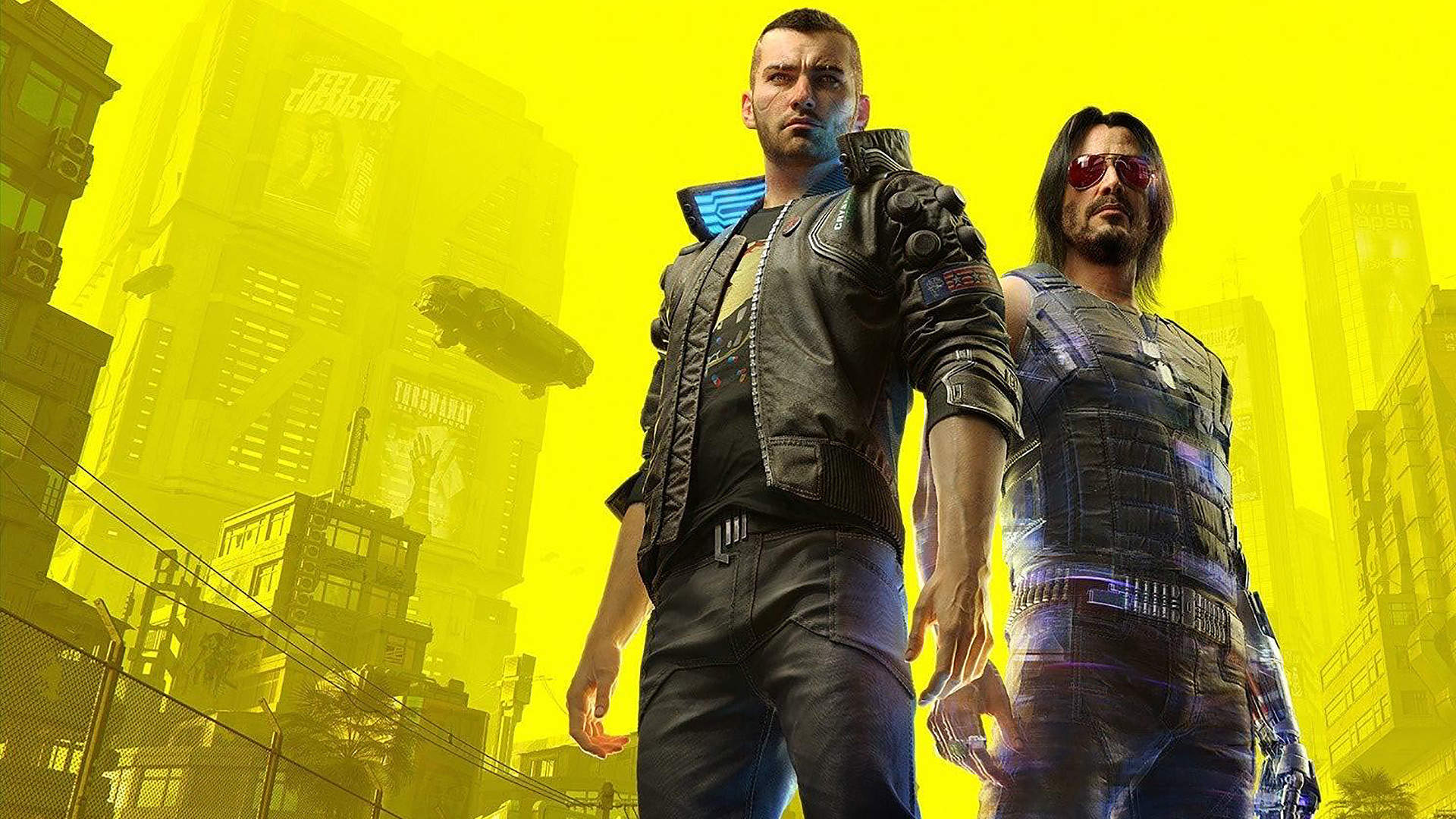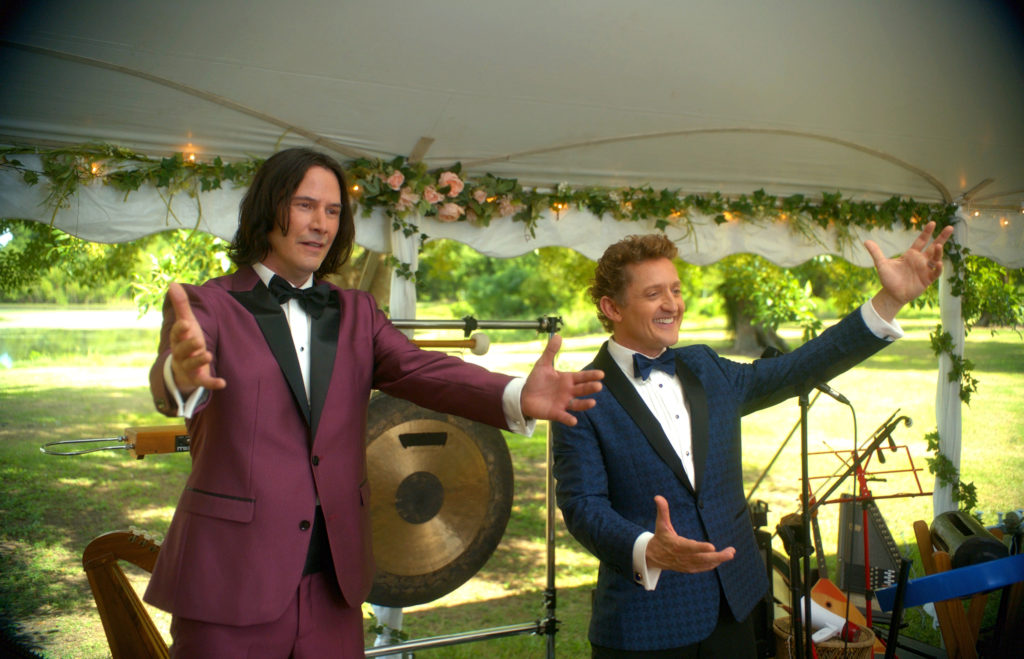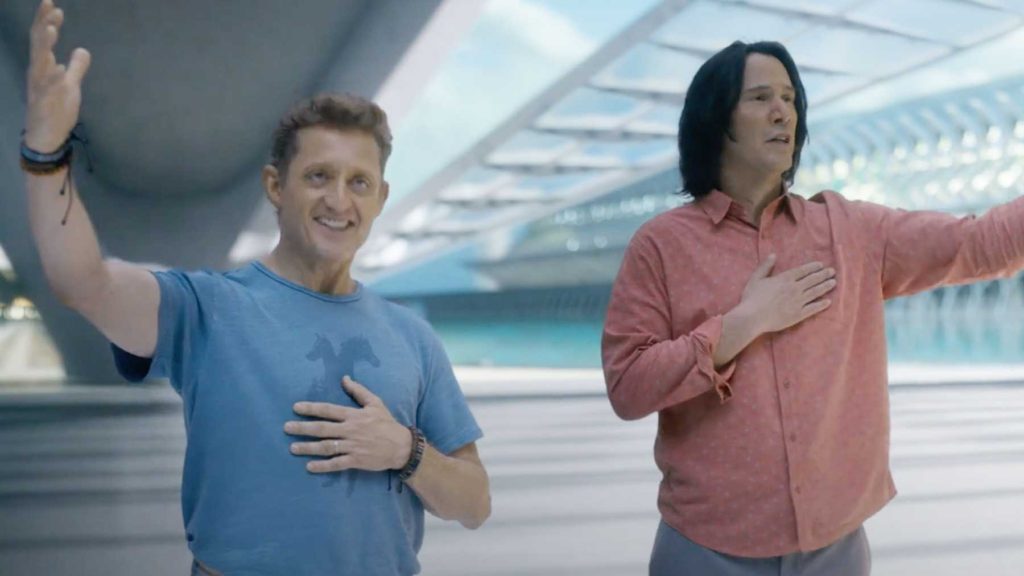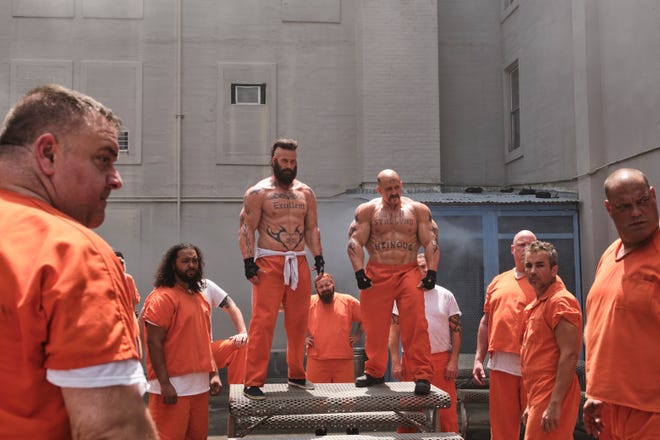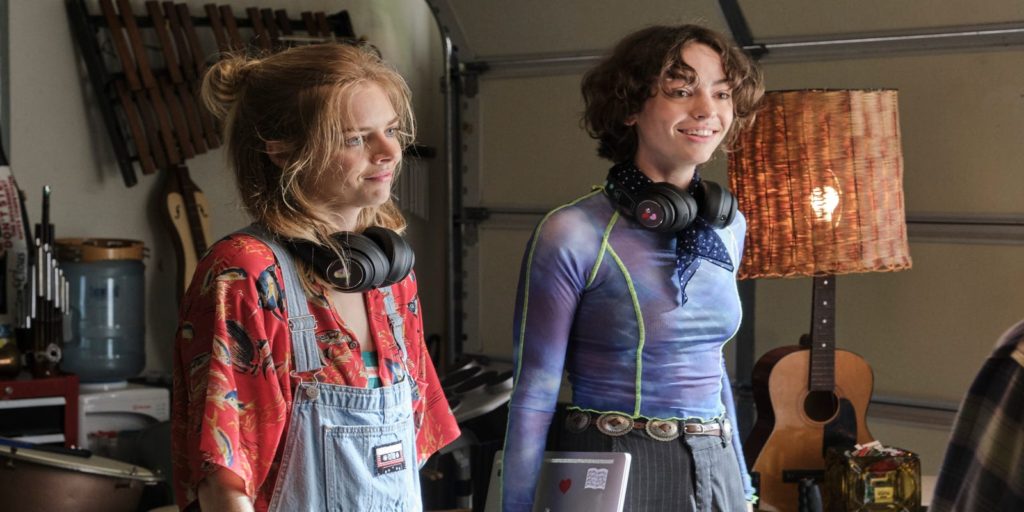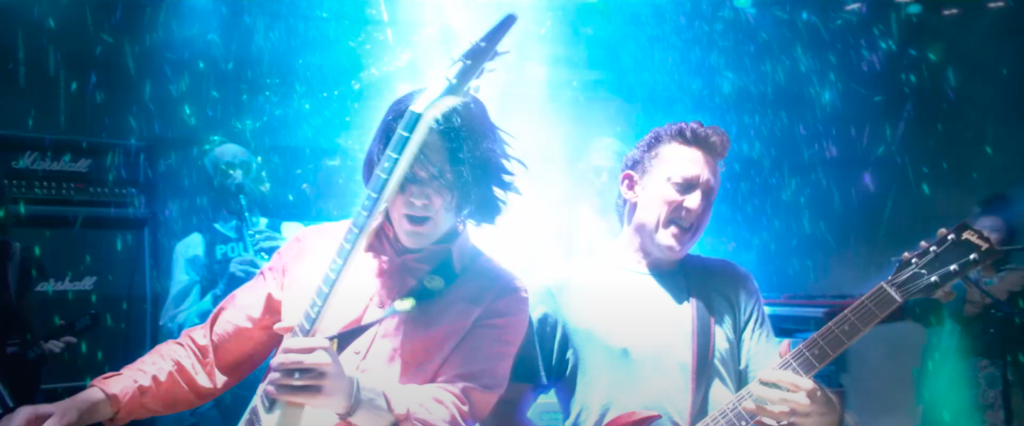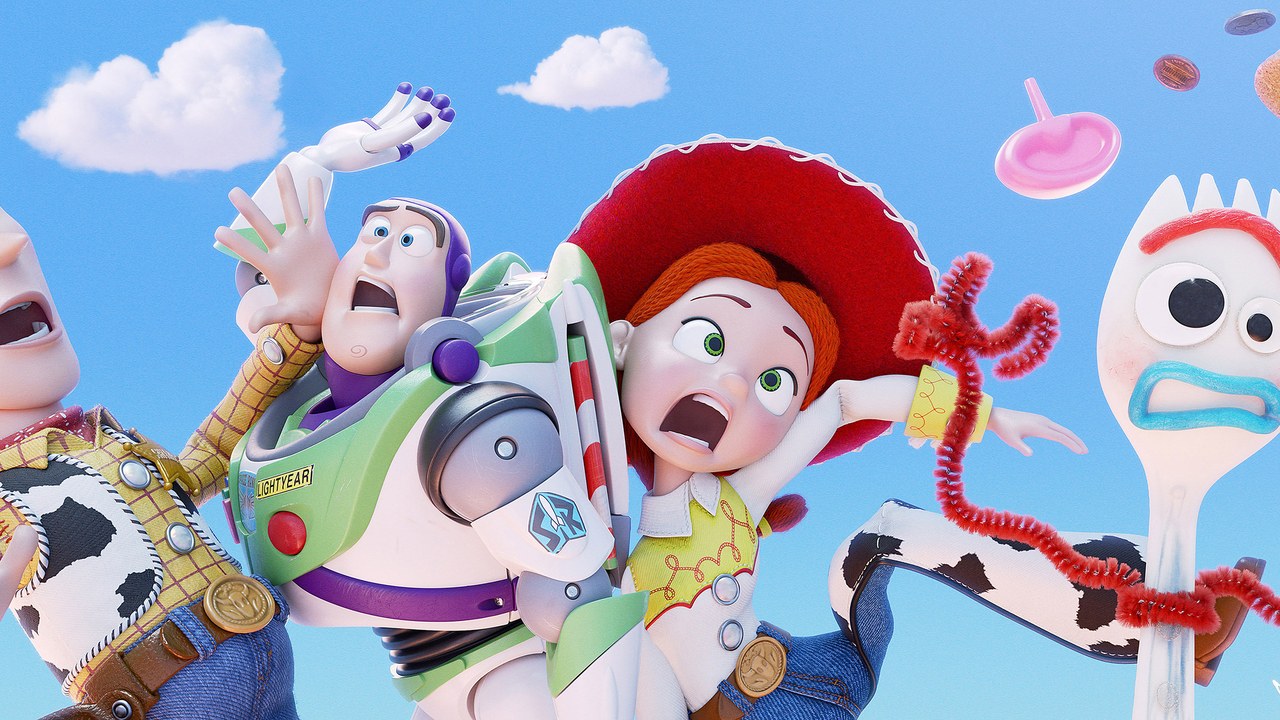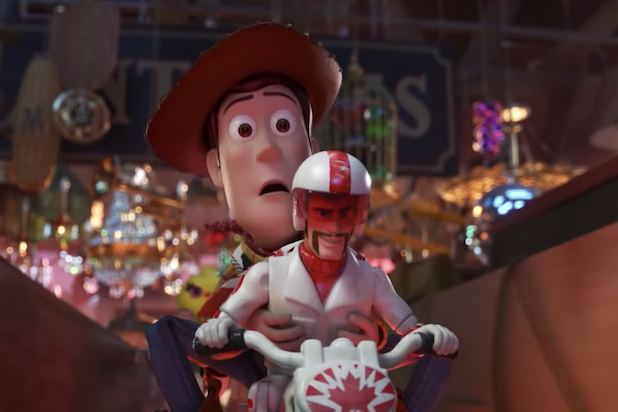
This past week had found me introducing my wife to the indelible, cool, violent, hilarious, and almost orgasmically stylish world of John Wick, starting from scratch to the lead up to the special dress-up party screening of John Wick: Chapter 4 at the Alamo Drafthouse down in Brooklyn’s Albee Square. Director Chad Stahelski returns to the series that started the journey into hilariously creative ultraviolence, along with star Keanu Reeves, who hasn’t lost a single step along the way…even if John Wick himself has lost a finger.
Following up on the events of the third film, John and Winston (Ian McShane) find themselves once again on the run, and with few trustworthy allies. We get a few familiar faces along the way, including The Bowery King (Laurence Fishburne, who seems to be enjoying every millisecond in the role), and Charon (the late Lance Reddick, who wound up getting the loudest, longest applause of the entire film…and also a dedication during the preshow).
John might have just uncovered a way out from under the crosshairs of the High Table, but before he gains his freedom, he has to survive a gauntlet of bounty hunters and fellow colorful assassins sent to sic him by the Grand Marquis (Bill Skarsgård). Globetrotting and expansive vistas ensue, as do incredibly well-staged fights in locations that offer nearly every possible weapon imaginable.
Stahelski and cinematographer Dan Laustsen can shoot the shit out of action scenes. One of the best bits of Laustsen’s tenure with the Wick series was the raid of the Bowery King’s lair back in Parabellum: the rich shadows hiding black-garbed assassins who pop out of nowhere and disappear back as if they were never there. In Chapter 4, most of the film is set in the same sort of darkened night world; even a neon-blazed nightclub run by Scott Adkins‘ Killa is lush in darkness — the neon acts more like a means to suck all available light out of the scene than to illuminate it, and it works to great effect.
As surprising as Scott Adkins is in this film (his appearance is…a choice, I’ll say that much), the absolute scene stealer is Donnie Yen as Caine. While just short of giving the protracted, multi-level fight between Wick and the Shinobi Twins (Yayan Ruhian, and Cecep Arif Rahman) that led into the fight with Zero (Mark Dacascos) in Parabellum a run for its money, what Caine lacks in an instantly iconic yet single clash is longevity. He and Wick cross paths multiple times, and never once does it feel like a rehash. This series — and this film, specifically — remains home to some of the most creative action set pieces in modern filmmaking.
What these films bring is a sense of fun through all the violence: all the characters know exactly what sort of movie they’re in, know exactly how outrageous their entire existence and universe is, and it is actually refreshing that while the inciting incident to this entire series of films is love (the taking away of it, to be more specific — and love not just of a person, but of places, things, objects, and purpose, to be even MORE specific, So don’t @ me), there isn’t a romantic subplot or any of that shit to bog down the film, or to make any of them feel perfunctory. And anyone who suggests that the lack of romance is a hindrance to ladies enjoying these films clearly has not met my wife, nor have they attended this screening: it was as close to a 50/50 split difference in guys to ladies in the screening.
These are movies that know what they are (silly action fantasies), know what they do (be as creatively, professionally violent as possible), and do it well (gorgeous people, costumes, and locales? Clear, shot composition and camera movements edited in a way that is exciting, energetic, and fucking easy for an audience to follow and know just where characters are in relation to each other).
Like the main character himself, these films probably the best of the bunch of modern action films, and endlessly creative. At nearly 3 hours long, Chapter 4 never loses its nerve, its energy, nor its focus. If only there were three more hours of footage to go.
The Alamo screening hosted a costume contest beforehand to judge best-dressed audience member (there were an INSANE number of well-dressed people.) Almost 20 contestants went on stage. The winner?
The woman who dressed as Wick’s dead dog. Stay beautiful, geeks.
5/5 Fortis Fortuna Adiuvat back tattoos.
John Wick: Chapter 4 is now playing in theaters.

